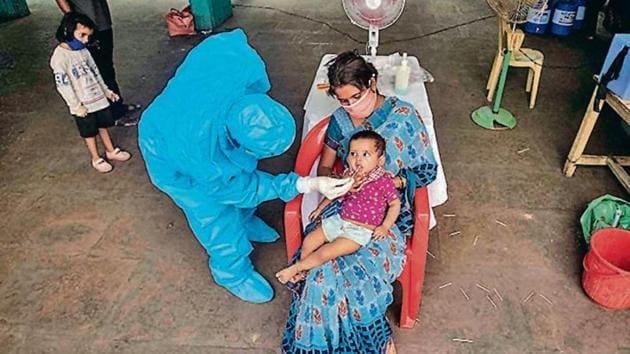
The past four weeks have not been kind to India.
Between April 27 and May 24, India saw 78% of its coronavirus disease cases, and 78% of its deaths. According to the HT dashboard, the number of cases and deaths were 138,474 and 3,949 respectively on Sunday night.
In the first of the four weeks, India added 14,540 cases and saw 516 deaths for an average of 2,077 cases a day and 74 deaths. In the second, it added 24,558 cases and saw 747 deaths. The per-day averages were 3,508 and 107.
In the third week, the numbers were 28,571 and 812, and the averages 4,082 cases and 116 deaths a day. And in the fourth week, India added 40,480 cases and saw 998 deaths, translating into averages of 5,783 cases and 143 deaths a day. I've previously written about the lag in reporting both cases and deaths, but the numbers are indicative of the general trend.
Follow latest updates on coronavirus here
Sure, the ongoing lockdown (which is tapering down) has helped reduce the number of cases; the growth rates of both cases and deaths are nowhere close to what they are in some of the worst-affected countries; and the case fatality rate, at 2.85%, is well below the world's 6.32% (in India's case, this number, as well as the recovery rate, have been improving over the weeks, a fact repeatedly pointed out in this column); but India should still be worried about the four-week trend.
Experts say (and the data bears out) that India is yet to witness the peak of the Covid-19 pandemic, but that's merely restating a fact that has been clear for a long time. What's important now is that the country not fritter away the gains of the lockdown. The fact that fatality rates are decreasing and recovery rates increasing is an indicator that we aren't - at least, not for now — but the challenge is to stay on the trajectory. India's containment strategy seems to have ensured that the number of cases didn't show the kind of sharp increase it did in countries such as Italy, Spain, and the US, overwhelming the health systems. It flattened the curve in that it reduced what in geometry is referred to as its slope, but didn't flatten it to the extent that the curve started to dip.
Now, the country's mitigation strategy needs to kick in. There are worrying signs there, as I wrote in the column yesterday. Hospitals in Mumbai (a total of 31,972 cases as of Sunday night, about 22% of India's total), are struggling to cope with the high volume of cases. Delhi would appear to have learnt from Mumbai's troubles; on Sunday, it earmarked more beds for Covid-19 patients in public as well as private hospitals in the city. It may not need them — while the number of daily cases in the Capital continues to rise (635 on Monday), most of the cases are mild, and do not require hospitalisation — but it needs to be prepared.
Part of the mitigation will also require state and district administrations to follow the Indian Council of Medical Research's guideline on weekly random testing to be carried out in every district in the country. As India opens up, this system, if followed, can serve as an early warning system, red-flagging potential hotspots.
And part of the mitigation will require the central governments and state governments to protect the most vulnerable population — people over the age of 65. It is surprising that travel advisories — air and rail services have both resumed — are silent on senior citizens.
Sign on to read the HT ePaper epaper.hindustantimes.com